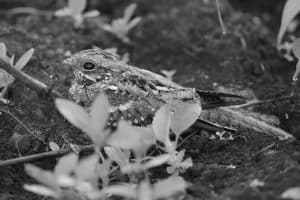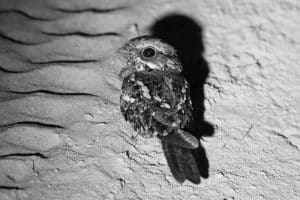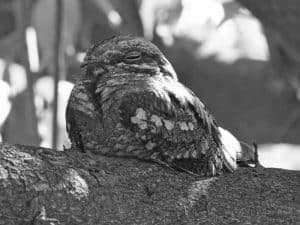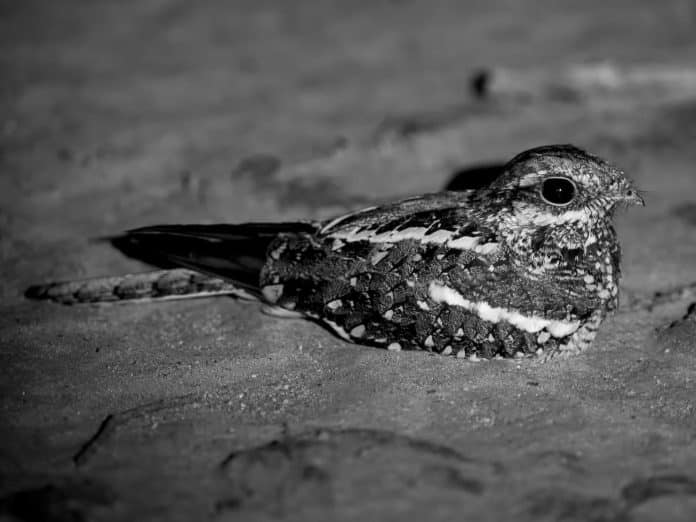Introduction to the Square-Tailed Nightjar
The square-tailed nightjar (Caprimulgus fossii) is a fascinating and mysterious bird species that can be found in Tanzania. This nocturnal bird belongs to the family Caprimulgidae and is known for its unique adaptations that allow it to thrive in the darkness of the night. In this article, we will delve into the habitat, behavior, vocalizations, and conservation status of the square-tailed nightjar in Tanzania, as well as provide tips on how to spot and photograph this elusive bird.
Habitat and Distribution of the Square-Tailed Nightjar in Tanzania

The square-tailed nightjar is native to Tanzania and can be found in various habitats across the country. These birds are particularly abundant in the coastal forests, woodlands, and savannas of eastern and southern Tanzania. They are also known to inhabit the miombo woodlands and riverine forests found in the western part of the country. The square-tailed nightjar prefers areas with dense vegetation and open spaces, as they rely on camouflage to stay hidden during the day.
Physical Characteristics and Behavior of the Square-Tailed Nightjar
The square-tailed nightjar is a medium-sized bird, measuring around 25 centimeters in length. It has a unique appearance, with a mottled brown and black plumage that helps it blend seamlessly with its surroundings. The bird’s most distinctive feature is its square-shaped tail, from which it gets its name. This tail is a key adaptation that allows the nightjar to perform impressive aerial acrobatics while hunting insects in the dark.
During the day, the square-tailed nightjar rests on the ground, relying on its excellent camouflage to remain inconspicuous. It is primarily a crepuscular and nocturnal bird, becoming active at dusk to hunt for insects. The nightjar has a wide gape and a large mouth, which it uses to catch flying insects in mid-air. Its silent flight and superb hearing enable it to locate prey with precision, making it a formidable hunter of the night.
The Unique Adaptations of the Square-Tailed Nightjar for Nocturnal Life
The square-tailed nightjar possesses several adaptations that allow it to thrive in its nocturnal lifestyle. One of its most remarkable features is its large eyes, which are perfectly suited for low-light conditions. These eyes have a high density of light-sensitive cells, allowing the bird to see clearly even in the darkness. Additionally, the nightjar’s wide gape and bristles around its mouth help it capture insects while in flight.
Another adaptation of the square-tailed nightjar is its unique feather structure. The bird’s wings have specialized feathers that allow for silent flight, enabling it to approach prey undetected. The nightjar’s plumage also provides excellent insulation, keeping the bird warm during the cool African nights. These adaptations, combined with its exceptional camouflage, make the square-tailed nightjar a master of stealth in the nocturnal realm.
Square-Tailed Nightjar Vocalizations and Mating Rituals
The square-tailed nightjar is known for its melodious and haunting vocalizations, which are often heard during the breeding season. The male nightjar performs a distinctive “churring” call, which consists of a series of deep, repetitive notes. This call is used to attract females and establish territory. The female, on the other hand, responds with a soft “purring” call that is less audible but equally enchanting.
During courtship, the male square-tailed nightjar performs an elaborate aerial display to impress the female. This display involves flying high in the sky, then suddenly diving and spiraling towards the ground while producing a distinctive “wing-clapping” sound. This impressive performance not only showcases the male’s agility but also serves as a display of his fitness and suitability as a mate.
Conservation Status and Threats to the Square-Tailed Nightjar Population

The square-tailed nightjar is currently classified as a species of least concern by the International Union for Conservation of Nature (IUCN). However, despite its relatively stable population, the bird faces several threats in Tanzania. Habitat loss due to deforestation, agricultural expansion, and urbanization poses a significant risk to the nightjar’s survival. Moreover, the use of pesticides and insecticides in agricultural practices can have a detrimental effect on the bird’s prey availability.
To ensure the long-term survival of the square-tailed nightjar, it is crucial to protect and conserve its natural habitat. This can be achieved through the establishment of protected areas, such as national parks and reserves, where the bird can thrive undisturbed. Additionally, raising awareness about the importance of preserving the nightjar’s habitat and promoting sustainable practices, such as ecotourism, can contribute to its conservation.
Best Places in Tanzania to Observe the Square-Tailed Nightjar
For those interested in observing the square-tailed nightjar in its natural habitat, Tanzania offers several prime locations. One of the best places to spot this nocturnal bird is the Udzungwa Mountains National Park, located in the Eastern Arc Mountains. The park’s diverse ecosystems and rich birdlife provide an ideal environment for the nightjar to thrive. Other notable locations include the Selous Game Reserve and Ruaha National Park, both of which are known for their abundant wildlife and bird species.
When visiting these areas, it is recommended to join guided birdwatching tours led by experienced local guides. These guides have extensive knowledge of the bird’s behavior and can greatly enhance the chances of a successful sighting. It is also important to respect the bird’s natural habitat and follow ethical practices, such as maintaining a safe distance and avoiding disturbance.
Tips for Spotting and Photographing the Square-Tailed Nightjar
Spotting and photographing the square-tailed nightjar can be a rewarding experience for bird enthusiasts and photographers alike. Here are a few tips to increase your chances of a successful encounter:
- Timing: The square-tailed nightjar is most active during the early morning and late evening hours. Plan your birdwatching excursions accordingly to maximize your chances of spotting the bird.
- Patience and Silence: The nightjar is a shy and elusive bird. To increase your chances of seeing it, be patient and remain quiet while observing. Avoid sudden movements or loud noises that could startle the bird.
- Use Low-light Photography Techniques: As the square-tailed nightjar is most active in low-light conditions, it is essential to use appropriate photography techniques. Consider using a tripod, adjusting your camera settings for low-light conditions, and utilizing a wide aperture to capture the bird in its natural environment.
The Importance of Ecotourism in Preserving the Square-Tailed Nightjar’s Habitat

Ecotourism plays a vital role in the conservation of the square-tailed nightjar and its habitat. By promoting responsible tourism practices, such as sustainable lodging, guided nature tours, and community involvement, ecotourism can generate income for local communities while preserving the natural environment. This revenue can then be reinvested into conservation efforts, habitat restoration, and community development projects.
Moreover, ecotourism provides an opportunity for visitors to appreciate the beauty and significance of the square-tailed nightjar and other unique bird species in Tanzania. By experiencing the wonder of these birds firsthand, visitors are more likely to develop a sense of connection and empathy towards their conservation. This increased awareness and appreciation can further contribute to the long-term survival of the square-tailed nightjar and its habitat.
Conclusion: Appreciating the Beauty and Mystery of the Square-Tailed Nightjar in Tanzania
The square-tailed nightjar is a captivating and enigmatic bird that adds to the rich biodiversity of Tanzania. Its unique adaptations for nocturnal life, haunting vocalizations, and impressive aerial displays make it a fascinating subject for bird enthusiasts and nature lovers. By understanding and appreciating the importance of preserving its habitat, we can contribute to the conservation of this remarkable species. So, next time you find yourself in Tanzania, keep an eye out for the square-tailed nightjar and marvel at the beauty and mystery of this nocturnal bird.

































